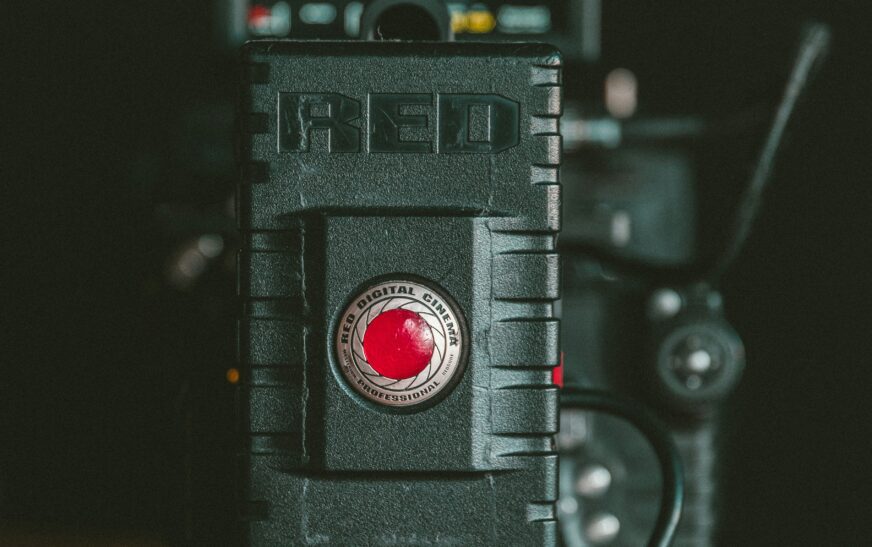Introduction to Digital Cameras
Are you ready to capture life’s moments in stunning detail? Digital cameras have transformed the way we take photos, making it easier than ever to preserve memories. Whether you’re a budding photographer or just looking to snap better pictures on your next vacation, choosing the right digital camera can be overwhelming. With countless options available, how do you know which one is perfect for you? Fear not! This guide will walk you through everything you need to consider when buying a digital camera equipment, ensuring that your final choice is both satisfying and suited to your unique needs. Let’s dive into the world of photography together!
Types of Digital Cameras Available
When buying a digital camera, understanding the types available is crucial. Each type caters to different needs and preferences.
DSLR cameras are popular among enthusiasts and professionals. They offer excellent image quality, fast autofocus, and interchangeable lenses. This versatility allows for creative freedom in photography.
Mirrorless cameras have gained traction due to their compact design and advanced features. They’re lightweight yet powerful, making them perfect for travel or street photography without sacrificing performance.
Point-and-shoot cameras focus on simplicity. Ideal for beginners or casual photographers, they come with built-in lenses and user-friendly settings that make capturing moments effortless.
Action cameras cater to adventurers who want to document thrilling experiences. These ultra-compact devices withstand extreme conditions while delivering high-quality video and photo results.
Smartphone cameras continue evolving rapidly. With impressive capabilities packed into small devices, they’re often the go-to choice for everyday snapshots without any fuss.
Factors to Consider Before Buying a Digital Camera
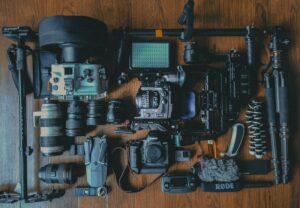
When buying a digital camera, start with your budget. Cameras come in various price ranges. Knowing how much you’re willing to spend can narrow down your options quickly.
Next, think about your user needs and experience level. Are you a beginner or an advanced photographer? Your choice will differ based on skills and intended use.
Megapixels and sensor size matter too. Higher megapixels mean better detail but don’t overlook sensor quality. A larger sensor often performs better in low light conditions.
Consider lens options as well. Interchangeable lenses offer versatility for different photography styles, while fixed-lens cameras are more portable and easier to manage.
Examine the features and settings available on each model. Look for manual controls if you’re looking to develop your skills further or specific modes that cater to your photography interests!
A. Budget
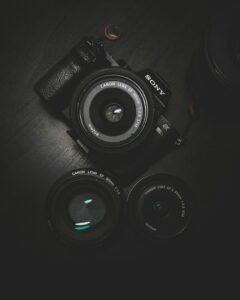
Setting a budget is one of the first steps in buying a digital camera. It helps narrow down your options quickly, making the selection process less overwhelming.
Digital cameras come in various price ranges. You can find entry-level models for under $300 and high-end professional gear that goes well beyond $3,000. Understanding what you’re willing to spend will save you time and effort.
Keep in mind that costs don’t stop at the camera itself. Factor in additional expenses like lenses, memory cards, bags, and software. These accessories often enhance your photography experience significantly.
Also, consider future needs as your skills improve or if you decide to pursue photography more seriously. Investing a bit more now could mean better equipment later on without needing another big expenditure soon after purchasing an initial model.
B. User Needs and Experience

When buying a digital camera, consider your unique needs and experience level. Are you a beginner eager to capture family moments? Or maybe you’re an enthusiast looking for more control over settings?
Beginners might prefer user-friendly models with automatic modes. These cameras simplify the process, allowing you to focus on composition rather than technical details.
For those with some experience, look for features like manual controls and RAW image formats. This flexibility enables creative expression and improves your photography skills.
If you’re a professional or aspiring pro, invest in advanced models that support different lenses and accessories. They offer unparalleled quality and versatility for various shooting scenarios.
Assessing your needs helps narrow down options. Think about the genres of photography that excite you—landscapes, portraits, or action shots—and choose accordingly. Your journey starts here!
C. Megapixels and Sensor Size
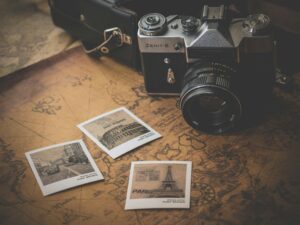
When buying a digital camera, understanding megapixels and sensor size is crucial. Megapixels determine the resolution of your photos. Higher numbers mean more detail, which is great for large prints or cropping images without losing quality.
However, it’s not just about the number of megapixels. The sensor size plays an equally important role in image quality. Larger sensors capture more light, resulting in better performance in low-light conditions and improved dynamic range.
For instance, full-frame sensors excel at producing stunning images with rich colors and details. On the other hand, smaller sensors can still deliver impressive results but might struggle in dim environments.
Consider what you plan to do with your photos before making a decision on these specs. Whether you’re capturing family moments or embarking on professional photography projects will influence your choice significantly.
D. Lens Options and Interchangeability
When buying a digital camera, lens options play a crucial role. The type of lens you choose can significantly affect your photography style and the quality of your images.
Many cameras come with a standard kit lens, which is versatile for everyday shooting. However, if you want to explore specific genres like portrait or landscape photography, investing in additional lenses is essential.
Interchangeability allows photographers to adapt their gear for various situations. For instance, prime lenses offer sharper images and larger apertures but are fixed at one focal length. Zoom lenses provide flexibility by covering multiple focal lengths in one unit.
Consider whether the camera supports different lenses from third-party manufacturers as well. This opens up even more possibilities and can help you save money while expanding your creative potential. Each option has its advantages; knowing what suits your needs will enhance your overall experience.
E. Features and Settings
When buying a digital camera, the features and settings are crucial. They can elevate your photography from average to extraordinary.
Look for cameras with different shooting modes. Options like manual, aperture priority, and shutter priority give you control over how images are captured. This flexibility allows creative expression.
Consider autofocus capabilities as well. Fast and accurate autofocus systems help in capturing sharp images of moving subjects or spontaneous moments.
Image stabilization is another important feature. It minimizes blurriness from shaky hands or fast movements, especially in low light conditions.
Additionally, built-in Wi-Fi or Bluetooth can enhance convenience by making it easier to share photos directly to your devices without hassle.
Don’t overlook video capabilities either. Many modern cameras offer high-definition recording options that cater to those looking to create dynamic content beyond stills.
Essential Accessories for Your Digital Camera
When you invest in a digital camera, having the right accessories can elevate your photography experience. Start with a sturdy camera bag to protect your gear during travel. A padded compartment keeps everything safe.
Next, consider additional memory cards. They offer extra storage for all those breathtaking shots you don’t want to miss. Opt for high-speed cards if you’re shooting videos or capturing fast action.
A tripod is another must-have accessory. It provides stability for long exposure shots and ensures clarity in low light conditions.
Don’t overlook lens filters either. They enhance your photos by reducing glare and improving color saturation.
An external flash can make a significant difference in lighting situations where natural light isn’t sufficient. With these essentials on hand, you’ll be well-equipped to explore the world of photography like never before!
Top 5 Digital Cameras for Different Budgets
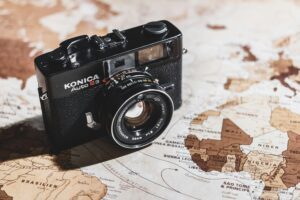
Choosing the right digital camera can be daunting, especially with so many options available. Here are five standout choices tailored to various budgets.
For beginners on a tight budget, consider the Canon PowerShot SX620 HS. It’s compact and easy to use, offering great image quality for everyday shots.
If you’re ready to invest a bit more, check out the Nikon D3500. This entry-level DSLR is perfect for those looking to learn photography without breaking the bank.
Stepping up in price? The Sony Alpha a6400 delivers impressive performance in both photos and videos. Its mirrorless design makes it lightweight while maintaining high-quality images.
For enthusiasts seeking advanced features, the Fujifilm X-T30 offers amazing color reproduction and retro aesthetics. It’s ideal for capturing stunning landscapes or vibrant portraits.
Professionals might gravitate toward the Canon EOS R5. With its incredible resolution and fast shooting speed, it’s designed for serious photographers who demand top-tier performance.
Tips for Taking Great Photos with Your New Camera
Experiment with different angles. Don’t just shoot from eye level. Get low to the ground or find a higher vantage point for a fresh perspective.
Pay attention to lighting. Natural light can transform your images dramatically. Early mornings and late afternoons often provide the most flattering conditions.
Master composition techniques like the rule of thirds. Imagine dividing your frame into nine equal parts and place key elements along these lines for more balanced photos.
Don’t shy away from editing tools after you capture your shots. Adjust brightness, contrast, and saturation to make colors pop without overdoing it.
Practice patience when photographing moving subjects. Anticipate their actions for better timing—often, great moments happen in an instant.
Keep shooting regularly! The more you practice, the better you’ll understand your camera’s capabilities and develop your unique style over time.
Understanding
Understanding the world of digital cameras can seem overwhelming at first. With so many options available, it’s essential to narrow down your choices based on what truly matters to you. Whether you’re a beginner looking for an easy-to-use camera or a seasoned photographer wanting advanced features, there’s something out there that suits your needs.
Take time to evaluate your priorities and consider how you’ll be using the camera. Will you be capturing family moments? Traveling the world? Or perhaps exploring nature photography? Each scenario may require different specifications and accessories.
Investing in quality gear will enhance your experience and improve your outcomes, but remember that great photography is not just about having the right equipment; it’s also about understanding composition, lighting, and subject matter. Practice makes perfect.
Stay informed and keep experimenting with different settings as you grow more comfortable with your new device. Take advantage of online resources like tutorials or forums where fellow photographers share their experiences.
Buying a digital camera is an exciting journey into creativity, exploration, and self-expression. Embrace this adventure!

